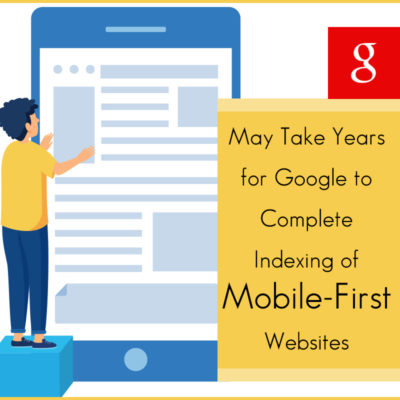 It is now more than a year when Google made it public that the search engine was about to introduce a strategic change in the manner it ranked websites. The change would mean that the search engine’s algorithms, in the long run, would first consider a website’s content created exclusively for a smartphone, for assigning a SEO rank to the site. At the same time, Google would first and foremost use the site’s mobile adaptation for displaying snatches or clips about the site in the SERPs and also for analyzing structured data.
It is now more than a year when Google made it public that the search engine was about to introduce a strategic change in the manner it ranked websites. The change would mean that the search engine’s algorithms, in the long run, would first consider a website’s content created exclusively for a smartphone, for assigning a SEO rank to the site. At the same time, Google would first and foremost use the site’s mobile adaptation for displaying snatches or clips about the site in the SERPs and also for analyzing structured data.
The world’s most popular search engine announced quite a long time ago that the process of shifting the sites from desktop-first indexing to Google mobile-first cataloguing was already underway. In fact, a significant proportion of the sites had already been transferred to the mobile-first register. Webmasters, web designers and developers, and SEO specialists have been expectantly waiting for the first roll out to become available.
Google’s engineers had expressed that the launch would have happened at the close of 2017. But as things stand now, it seems that the roll out might become a reality by the end of 2018.
Demystifying Google mobile-first indexing
The connotation or meaning of Google mobile-first is quite straightforward. It simply means that when or whenever the search engine embarks on a SEO drive, it will accord primacy to your site’s mobile edition. In other words, it is the smartphone transcript of a site that Google will first take up for ranking. You could see an upsurge in traffic (facilitated by smartphone Googlebot) when you analyze traffic directing to your site.
Also, the cached copies of the web pages that are visible will normally be the pages’ mobile variations. Mobile-first does not just imply that the indexing is compatible only for smartphones-if you’re yet to create a smartphone-friendly version, the index will continue to rank your desktop adaptation. Nevertheless, you should not lose sight of the fact that your site’s ranking could take a beating in the absence of a smartphone-compliant version.
On the other hand, sites with mobile-friendly editions will rank better even when Google ranks desktop-first (indexed) websites.
Migration of sites from desktop-first indexing to mobile-first indexing far from complete
Google Webmaster trends analyst, Gary Illyes had remarked in June 2018 that was “probably many quarters away” from making available its mobile-first directory. He also added that the change (the changeover from desktop first to mobile first) would be ground-breaking and there was absolutely no reason to feel alarmed about the transition. Webmasters were anxious to hear from Gary about the exact launch date but he was unable to specify the same.
Illyes, at the same time, made it amply clear that the search engine was also working on releasing the index in a manner so as to not adversely impact sites that were yet to become mobile-ready. And it is for this reason the launch was getting rescheduled time and again. He also mentioned that Google wanted to be doubly sure that the sites categorized in the mobile-first catalogue would not negatively impact non-smartphone-friendly websites.
Evidently enough, the roll out could take a long time-in fact it won’t be due before 5 years. He expressed that Google was willing to discuss at length with the publishers regarding the launch, instead of keeping them in the dark about it. He made it clear that the Google mobile-first roll will not come in the way of ranking desktop-centric sites.
Gary said “Mobile-first means mobile first. It only means that we’ll look for mobile content first”. On your end, you should see to it that your site’s design and content is companionable with smartphones, tabs, and all other types of handheld digital gadgets so that you’re not caught unawares when it actually happens.
You can know more about Google’s mobile-first index at www.localseojacksonville.biz.








